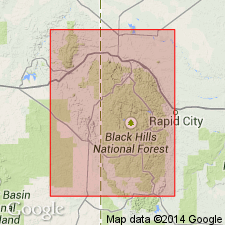
- Usage in publication:
-
- Stockade Beaver shale member*
- Modifications:
-
- Named
- Dominant lithology:
-
- Shale
- AAPG geologic province:
-
- Powder River basin
Summary:
Named as a member of Sundance formation for Stockade Beaver Creek. Type section: west side of Stockade Beaver Creek about 5 mi northeast of Newcastle in sec 18, T45N, R60W, Weston Co, WY in the Powder River basin. Medium- to dark-gray, soft, fissile, calcareous shale which ranges in thickness from 5-85 ft; average thickness about 50 ft; at type section 63 ft. Overlies Canyon Springs member (new); underlies Hulett sandstone member (new). Locally overlies Gypsum Spring formation or Spearfish formation. Is Late Jurassic (Callovian) in age.
Source: GNU records (USGS DDS-6; Denver GNULEX).
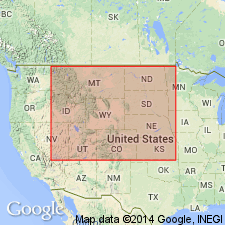
- Usage in publication:
-
- Stockade Beaver shale member
- Modifications:
-
- Biostratigraphic dating
- AAPG geologic province:
-
- Chadron arch
- Williston basin
- Powder River basin
Summary:
Describes FORAMINIFERA from 7 localities in MT, WY, ND, and SD in the Powder River and Williston basins, and on Chadron arch. Collected from Rierdon formation in MT, from Stockade Beaver shale member of Sundance formation in WY and SD, and from Sundance formation in ND. Late Jurassic (Callovian) in age.
Source: GNU records (USGS DDS-6; Denver GNULEX).
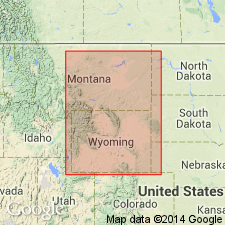
- Usage in publication:
-
- Stockade Beaver shale member
- Modifications:
-
- Revised
Summary:
Reallocated to member status in Rierdon formation herein assigned to Sundance group. Assigned a Callovian, Late Jurassic age.
Source: GNU records (USGS DDS-6; Denver GNULEX).
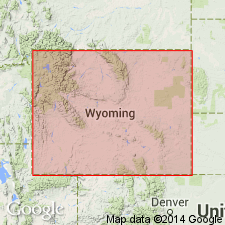
- Usage in publication:
-
- Stockade Beaver Shale Member
- Modifications:
-
- Overview
Summary:
Assigned to the "lower Sundance" Formation. Contains beds representing the transition from transgressive to regressive depositional regimes. Is of Late Jurassic age.
Source: GNU records (USGS DDS-6; Denver GNULEX).
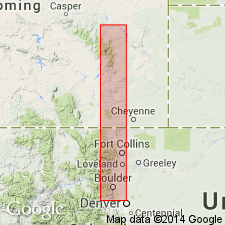
- Usage in publication:
-
- Stockade Beaver Shale Member*
- Modifications:
-
- Areal extent
- AAPG geologic province:
-
- Denver basin
- Powder River basin
Summary:
Is one of seven members of Jurassic Sundance Formation (Canyon Springs Sandstone, Stockade Beaver Shale, Hulett Sandstone, Lak, Pine Butte, Redwater Shale, and Windy Hill Sandstone (top) Members) north to Chugwater Creek, Laramie Co, WY in northern Denver basin north to Douglas, Converse Co, WY in Powder River basin. Measured sections shown graphically.
Source: GNU records (USGS DDS-6; Denver GNULEX).
For more information, please contact Nancy Stamm, Geologic Names Committee Secretary.
Asterisk (*) indicates published by U.S. Geological Survey authors.
"No current usage" (†) implies that a name has been abandoned or has fallen into disuse. Former usage and, if known, replacement name given in parentheses ( ).
Slash (/) indicates name conflicts with nomenclatural guidelines (CSN, 1933; ACSN, 1961, 1970; NACSN, 1983, 2005, 2021). May be explained within brackets ([ ]).

